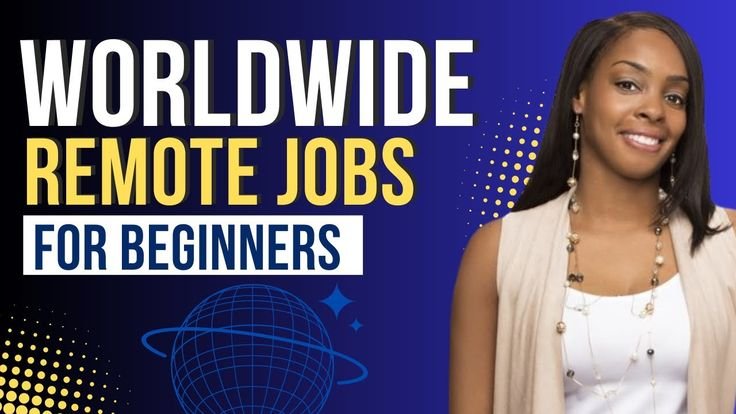Introduction
The rise of remote work has opened up incredible opportunities for professionals worldwide to work for US-based companies without relocating. Whether you’re a software developer in India, a digital marketer in Nigeria, or a customer support specialist in the Philippines, American companies are increasingly hiring global talent for remote positions.
This comprehensive guide will walk you through:
✅ Visa and legal considerations
✅ Where to find legitimate remote jobs
✅ How to stand out in applications
✅ Time zone management strategies
✅ Companies that hire internationally
By the end, you’ll have a clear roadmap to securing a high-paying remote job with a US employer.
Why US Companies Hire Remote Workers from Abroad
1. Access to Global Talent
US companies can tap into specialized skills that may be scarce domestically, particularly in tech, design, and multilingual support roles.
2. Cost Efficiency
While salaries are competitive, companies often save on benefits and overhead costs compared to US-based hires.
3. 24/7 Operations
Customer support and IT teams benefit from having employees across different time zones.
4. Diversity & Innovation
Global teams bring fresh perspectives that drive creativity and problem-solving.
Legal Considerations for Working Remotely
1. Visa Options (If You Want to Relocate)
| Visa Type | Best For | Duration | Key Requirement |
|---|---|---|---|
| H-1B | Specialty occupations | 3-6 years | Bachelor’s degree + sponsor |
| L-1 | Intracompany transfers | Up to 7 years | Worked 1+ year at foreign branch |
| O-1 | Extraordinary ability | 3 years | National/international recognition |
| TN | Canadians/Mexicans | 3 years | NAFTA-approved profession |
2. Working Remotely Without a Visa
Many professionals work for US companies as:
-
Independent contractors (1099 form)
-
Employees of a local entity (via Employer of Record services like Deel or Remote.com)
-
Freelancers (through platforms like Upwork)
Important: Tax treaties may apply—consult an accountant to avoid double taxation.
Where to Find Remote Jobs with US Companies
1. Dedicated Remote Job Boards
-
We Work Remotely (weworkremotely.com)
-
Remote OK (remoteok.io)
-
FlexJobs (flexjobs.com) (Vetted listings)
2. LinkedIn Strategies
-
Use filters: “Remote” + “Worldwide”
-
Optimize your profile with keywords like “Open to remote work for US companies”
-
Follow US-based recruiters in your industry
3. Freelance Marketplaces
-
Toptal (Top 3% talent)
-
Upwork (Great for long-term contracts)
-
Fiverr Pro (High-end gigs)
4. Direct Outreach
-
Target US startups on AngelList
-
Cold email hiring managers with a portfolio
How to Stand Out in Applications
1. Resume & Cover Letter Tips
✔ Use a US-friendly format (1 page max for most roles)
✔ Highlight remote experience (if any)
✔ Mention time zone flexibility (e.g., *”Available for 4+ hours of overlap with EST”*)
2. Portfolio Best Practices
-
Case studies > just pretty designs
-
Show measurable impact (e.g., “Increased conversions by 30%”)
3. Acing the Virtual Interview
-
Tech check: Test Zoom, stable WiFi
-
Background: Neutral, professional setting
-
Time zones: Confirm meeting times in the interviewer’s timezone
Time Zone Management Strategies
1. Ideal Overlap Hours
| Your Location | Best Availability Window |
|---|---|
| Europe | 12 PM – 5 PM EST |
| India | 7 AM – 11 AM EST |
| Latin America | 9 AM – 2 PM EST |
2. Tools to Stay Aligned
-
World Time Buddy (Schedule across timezones)
-
Slack Status Updates (Set “Available” hours)
-
Loom (Async video updates)
Top US Companies That Hire Remote Workers Globally
| Company | Industry | Roles Commonly Hired |
|---|---|---|
| GitLab | Tech | Developers, DevOps |
| Toptal | Consulting | Freelance experts |
| Doist | Productivity | Marketing, Support |
| Zapier | SaaS | Customer Success |
| InVision | Design | UI/UX Designers |
Red Flags to Avoid
🚩 “Pay-to-apply” scams
🚩 Vague contracts (Always get agreements in writing)
🚩 Unrealistic salary promises (Research Glassdoor averages)
Success Story: Maria’s Journey (Colombia → US Tech Company)
“I landed a $75k remote job as a UX designer by networking on LinkedIn and showcasing case studies. The key was proving I could deliver better value than local candidates.”
Final Checklist
☑️ Optimize LinkedIn/resume for US recruiters
☑️ Research visa/tax requirements
☑️ Build a strong portfolio
☑️ Practice time zone management
